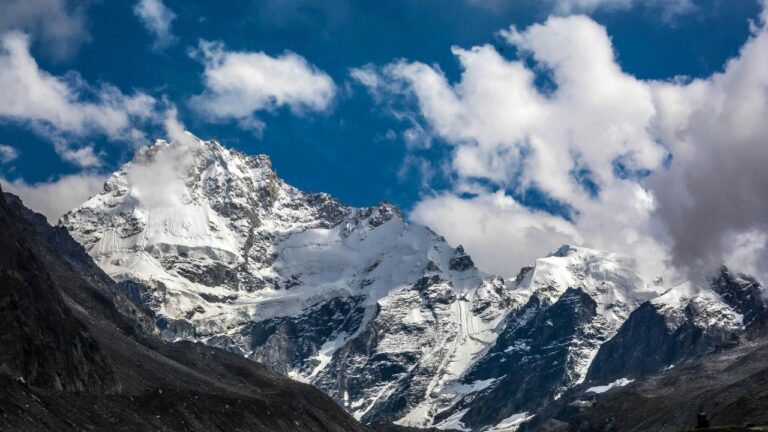
Climate change is increasingly recognized as a critical national security issue, transcending environmental concerns to influence geopolitical stability, economic resilience, and military preparedness. Rising global temperatures, extreme weather events, sea-level rise, and resource scarcity are not just environmental challenges—they are catalysts for conflict, migration, and strategic vulnerability.
For India, a nation with vast coastlines, dense population centers, and strategic regional interests, the security implications of climate change are multifaceted. Addressing these challenges requires integrating environmental considerations into national security planning, defense operations, and foreign policy.
Climate Change as a Security Threat
Climate change affects security both directly and indirectly:
- Natural Disasters and Humanitarian Crises:
- Cyclones, floods, droughts, and heatwaves disrupt civilian infrastructure and strain government resources.
- Military forces are increasingly called upon for disaster relief, humanitarian assistance, and evacuation operations, impacting operational readiness.
- Resource Scarcity and Conflict:
- Water shortages, declining arable land, and competition for energy resources can exacerbate tensions within and between nations.
- Historical analysis suggests that resource scarcity often acts as a “threat multiplier,” intensifying existing political, ethnic, or territorial conflicts.
- Forced Migration and Regional Instability:
- Climate-induced migration, both domestic and cross-border, can create humanitarian crises and destabilize neighboring regions.
- For example, sea-level rise in South Asia threatens densely populated delta regions, potentially displacing millions and creating new security challenges.
- Impact on Military Infrastructure:
- Extreme weather events and rising sea levels threaten naval bases, airfields, and defense installations.
- Ensuring operational continuity in the face of climate-related disruptions demands proactive infrastructure planning and resilient logistics networks.
Global Perspective on Climate and Security
The security implications of climate change are increasingly recognized in international defense strategies:
- United States: The Department of Defense has identified climate change as a “threat multiplier,” integrating environmental risk assessments into strategic planning.
- European Union: Climate security is a core component of foreign policy, emphasizing conflict prevention, resilience building, and adaptation strategies.
- United Nations: UN Security Council discussions have highlighted the link between environmental stress and regional conflicts, particularly in Africa and the Middle East.
These global trends demonstrate that climate change is not a peripheral concern- it is central to strategic decision-making and international security cooperation.
India’s Vulnerabilities
India’s geographic and demographic profile makes it particularly susceptible to climate-induced security risks:
- Coastal Vulnerabilities: India’s 7,500 km coastline hosts major ports, naval bases, and population centers. Rising sea levels and cyclones threaten infrastructure critical to both civilian and military operations.
- Water and Food Security: Glacial melt in the Himalayas, changing monsoon patterns, and groundwater depletion affect freshwater availability and agricultural output, potentially triggering regional disputes.
- Border and Regional Stability: Climate stress in neighboring countries, such as Bangladesh, Myanmar, and Pakistan, can exacerbate migration flows, cross-border tensions, and humanitarian challenges.
Strategic Responses and Policy Initiatives
India has recognized the intersection of climate and security, integrating environmental resilience into national and defense planning:
- Disaster Response and Preparedness:
- The National Disaster Management Authority (NDMA) coordinates disaster relief operations, often involving the Indian armed forces.
- Initiatives like Cyclone Warning Centers, flood management systems, and rapid deployment protocols enhance disaster resilience.
- Sustainable Defence Infrastructure:
- The armed forces are increasingly adopting energy-efficient, climate-resilient infrastructure.
- Solar-powered bases, resilient coastal installations, and water-conservation measures reduce vulnerability while promoting sustainability.
- Regional Cooperation:
- India engages in regional dialogues to address climate-related security risks, including water-sharing agreements, joint disaster management exercises, and multilateral forums such as the Bay of Bengal Initiative for Multi-Sectoral Technical and Economic Cooperation (BIMSTEC).
- International collaboration ensures knowledge sharing, capacity building, and coordinated responses to transnational climate threats.
- Integration with National Security Doctrine:
- The National Security Strategy and Defense Policy increasingly emphasize climate resilience as a strategic priority.
- Climate risk assessments are being integrated into operational planning, logistics, and strategic infrastructure development.
Emerging Opportunities and Technology Integration
Technology plays a critical role in mitigating climate-related security risks:
- Satellite Monitoring and Early Warning Systems: AI-enabled satellite imagery and predictive analytics help anticipate floods, cyclones, and other extreme events.
- Climate-Resilient Infrastructure: Advanced construction techniques, renewable energy deployment, and coastal defenses enhance military and civilian resilience.
- Data-Driven Policy: Geographic Information Systems (GIS) and climate modeling inform strategic decisions, resource allocation, and disaster preparedness.
Challenges Ahead
Despite progress, several challenges remain:
- Resource Constraints: Implementing large-scale climate adaptation measures requires sustained investment and inter-agency coordination.
- Predictive Uncertainty: Climate modeling is inherently probabilistic, making it difficult to anticipate extreme events with complete accuracy.
- Regional Geopolitics: Climate stress in neighboring countries can exacerbate border tensions and complicate bilateral cooperation.
- Integration with Military Strategy: Embedding climate resilience in operational doctrines requires training, awareness, and cultural shifts within defense institutions.
Conclusion
Climate change is no longer a distant environmental concern- it is a pressing national security issue that affects military readiness, regional stability, and strategic autonomy. For India, integrating climate resilience into national security and defense planning is essential to safeguard critical infrastructure, manage resource scarcity, and mitigate the risk of conflict.
By combining technology, policy foresight, and regional cooperation, India can strengthen its preparedness for climate-induced security challenges. Strategic investments in resilient infrastructure, predictive analytics, and collaborative frameworks will not only protect national interests but also position India as a responsible regional leader in addressing the nexus of climate and security.
As global climate patterns continue to evolve, national security strategies must adapt accordingly. A proactive, data-driven, and collaborative approach will ensure that India can navigate the complex interplay between environmental change and strategic stability, securing the nation’s future in an increasingly unpredictable world.






